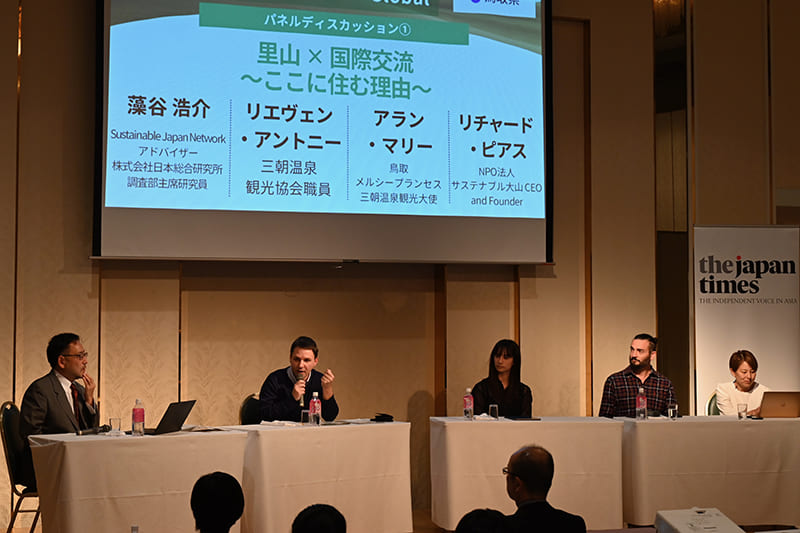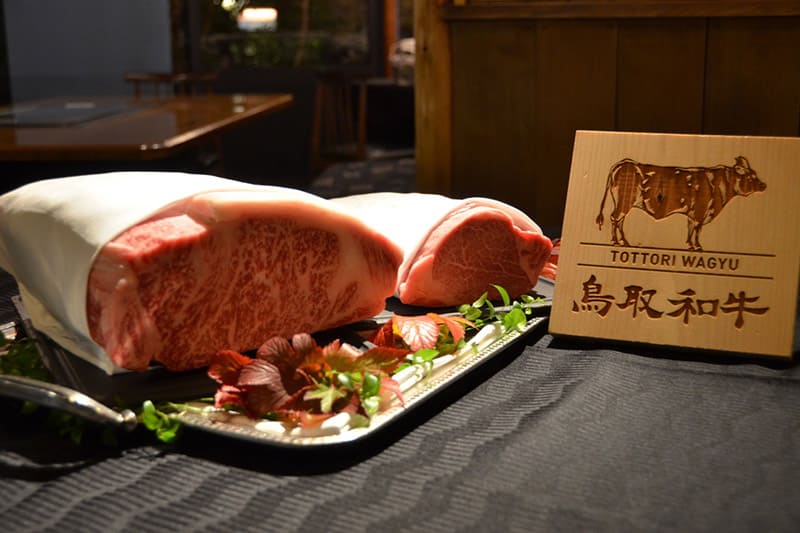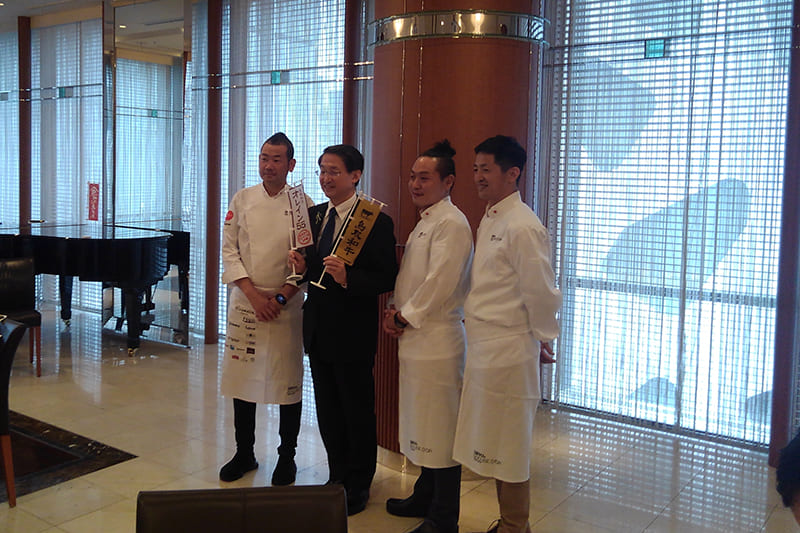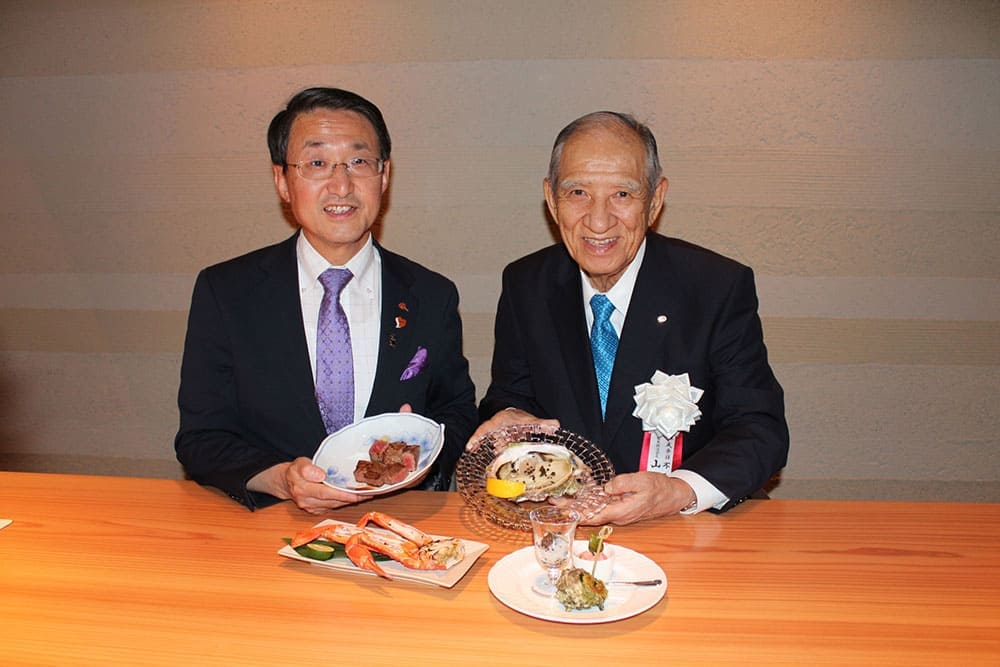December 15, 2019
Various potential opportunities to be found in forests, farms
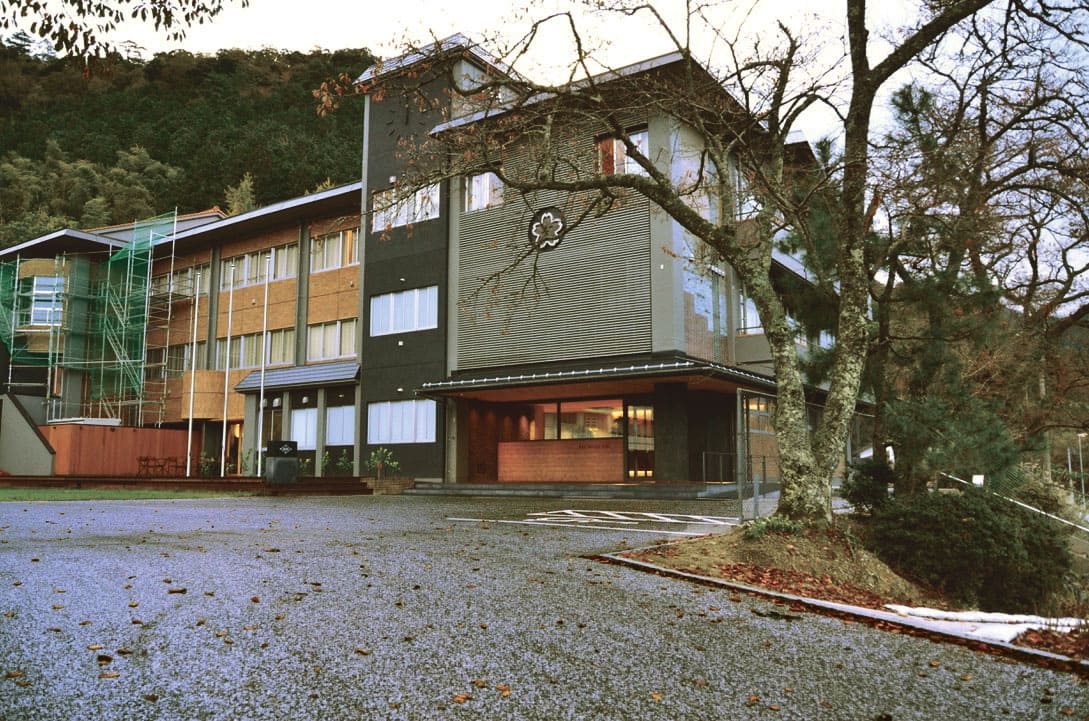
The Japan Times Satoyama Consortium organized a two-day study tour in Tottori and Okayama prefectures in November to learn about a variety of projects and businesses that are making effective use of natural resources in both regions.
The consortium aims to help relevant parties promote their activities related to effective utilization of satoyama and satoumi — terms that respectively refer to woodlands and coastal areas maintained and cared for by people living near them.
In the town of Yazu in the eastern part of Tottori, the study tour visited Hayabusa Lab., which is a complex of restaurants, shops, rooms for workshops and lectures, co-working space and offices. All of these establishments are housed in a building that used to be a local elementary school. In the town with a population of only about 17,000, Hayabusa Lab. receives around 42,000 visitors annually.
Due to the decline in the number of students, the school was merged with a neighboring school five years ago. Mieko Kawanishi, the head of the planning division of the town office, explained that the town used its budget to renovate the building, but since its launch in 2017, the facility has been fully run by private company C-Seven Hayabusa without any financial support from the municipality.
Takuya Furuta, who heads the company, came back to his hometown of Yazu seven years ago after working as a graphic designer in Tokyo. Before the launch of Hayabusa Lab., he had opened a cafe and a guesthouse in the area. With the co-working and office space and an extensive startup program it offers, Hayabusa Lab. nurtures and supports young entrepreneurs like himself.
The members of the study tour stayed overnight at the Ooe Valley Stay, another former elementary school. A large clock on its facade and a gymnasium next to the main building remind visitors that it was once filled with schoolchildren. However, inside the building is a modern and sophisticated hotel with a stylish restaurant on the first floor that serves local specialties.
Oenosato Natural Farm, a local enterprise that has found success in chicken farming, runs the hotel. Based on his belief to raise and sell healthy and delicious eggs, CEO Riichiro Ohara restructured the way his family ran the chicken farm, and restarted it as an organic, floor-feeding chicken farm selling directly to customers via mail order in 1994.
Today, the company runs restaurants, food and confectionery factories while offering hands-on activities at the farm and accommodating guests at the hotel. “It all started from my simple wish to invite people to see where our chickens live,” Ohara said.
The participants also visited Mori no Yochien Marutanbou, an outdoor kindergarten in the town of Chizu, south of Yazu. Instead of having a building or a classroom, the kindergarten has 14 field sites.
“Mountains, riversides and roads — the whole town is our classroom,” said Saeko Nishimura, the chairperson of the nonprofit that runs the kindergarten.
Having once engaged in mangrove forest research in Myanmar when she was in her 20s, Nishimura felt that Japanese parents tend to be overprotective of their children. Her husband was from Tottori Prefecture, so they moved to Chizu to raise their children in a more natural and traditional environment. “It can be inconvenient living out here, but such inconvenience is an important factor in children’s growth. They have no choice but to use their hands and brains,” she said.
She did not keep her experience and satisfaction to herself. She set up a nonprofit to start a kindergarten followed by another preschool community and Shinden Sudbury School, as well as a share house.
Naoko Oshima, an architect who heads the architecture division of Youbi furniture and architecture studio, is one of the parents who chose the kindergarten in the forest for her children. Her daughter’s daily life is fully connected to and surrounded by the forests just like her mother’s. Youbi was established in Nishiawakura, a village in the northeastern part of Okayama Prefecture, in 2009.
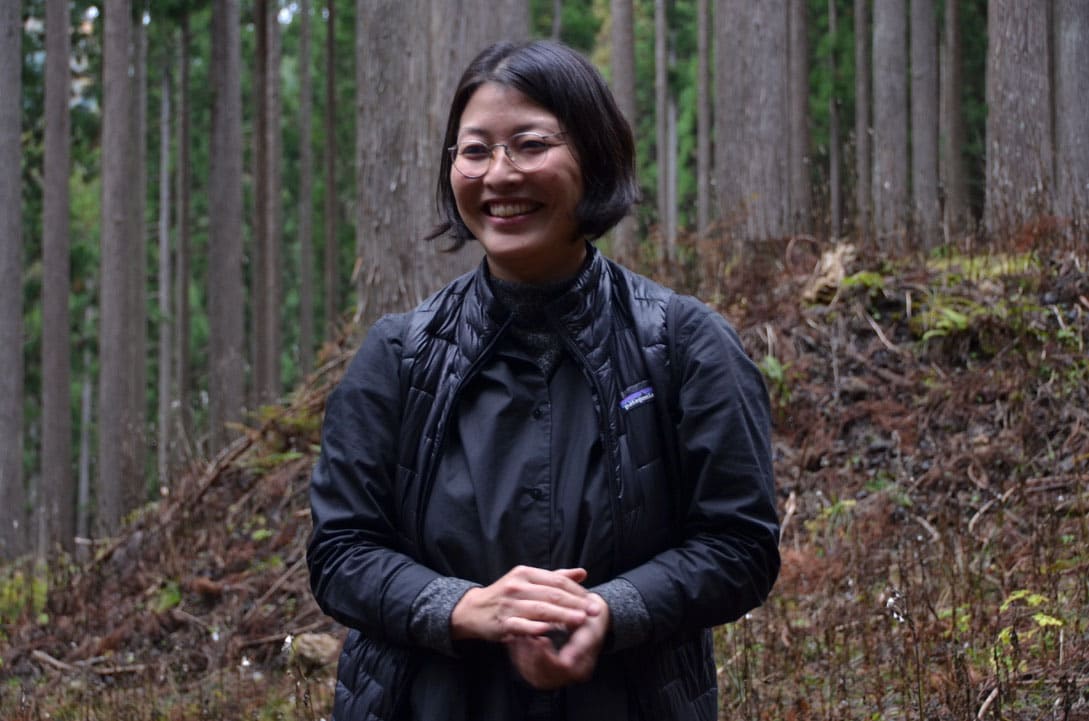
Since its launch, Youbi’s woodcrafters and architects have been using local resources — mostly cypress trees — to make their products. Mature trees that were planted 50 years ago during the period of postwar economic growth need to be cut down to maintain the ideal environment in the forest for the healthy growth of newer trees. Therefore, using forest resources means protecting forests, so that “we can maintain what has been maintained for half a century, for another half a century,” Oshima said.
Chizu no Mori no Manabiya (workshop in the forest of Chizu) is a group that was established in 2015 with the aim of supporting small forestry businesses, as well as those looking to start one. It offers workshops inviting various forestry professionals from all over Japan.
“We also teach how to build forest roads, which is quite unique. Forestry schools teach how to care for and cut trees, but usually not how to build roads even though safe and efficient road-building is indispensable in transporting the trees that have been cut down,” said Kunihiro Ohtani, the head of the group who took over mountains owned by his grandfather to continue the forestry business.
In Chizu, the participants also visited Mitakien, a garden restaurant that offers a diverse variety of traditional dishes prepared by local chefs. Most are elderly housewives using locally produced, foraged and hunted ingredients. Since the daughter of the current owner renewed the restaurant’s website recently, the number of younger customers increased.
There are also second- and third-generation farmers who are revitalizing agriculture in the region. Satoshi Tanaka took over the family Tanaka Nojo farm two years ago. About 99 percent of the rice fields that Tanaka cultivates are leased from other farmers.
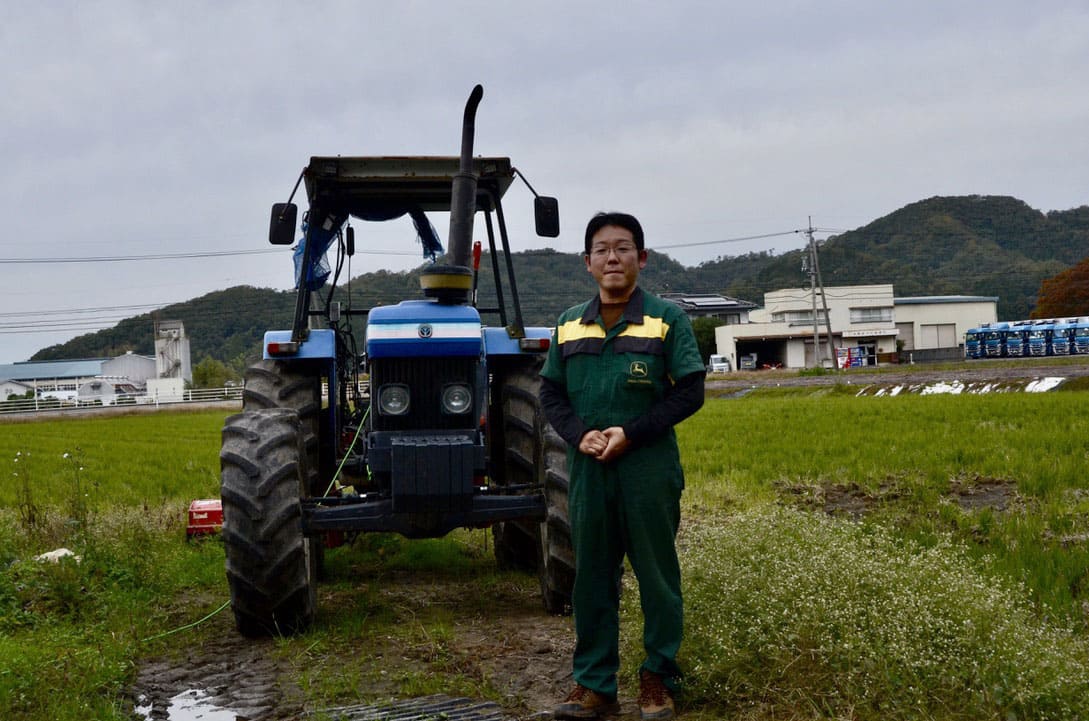
“We’ve never asked for more lands, it’s just that as farmers get older, they start to look for someone who can continue farming on their land,” he said. “Currently, we produce rice that is chemical-free or grown with reduced amounts of fertilizer on land that we are renting from 255 people.”
Tanaka hires young people who plan to start farming on their own so that they can learn and prepare in advance while he also tries new things such as introducing a drone and an autonomous rice planter, and exporting leeks that are grown on rice paddies during wintertime.
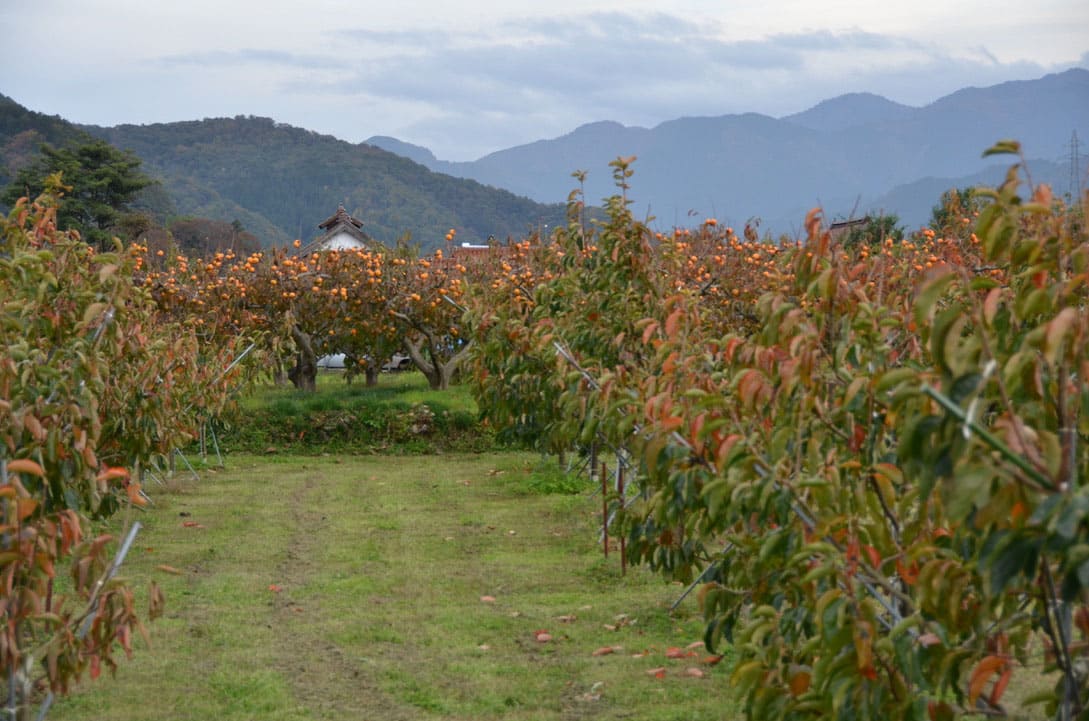
Among the young farmers who have been trained at Tanaka Nojo is Akito Okazaki, who runs Okazaki Farm, a persimmon orchard. In order to sustain the orchard with more than a century of history, he took over the business from his grandfather when he was 30 years old. His various efforts include pruning the trees and growing several kinds of persimmons with different characteristics.
Okazaki’s high-quality persimmons are sold mostly to shops and individual customers directly instead of going through a local agricultural cooperative. “My next plans are to make this place a resort orchard that can attract tourists, create processed foods using persimmons and hire people with disabilities,” he said.


